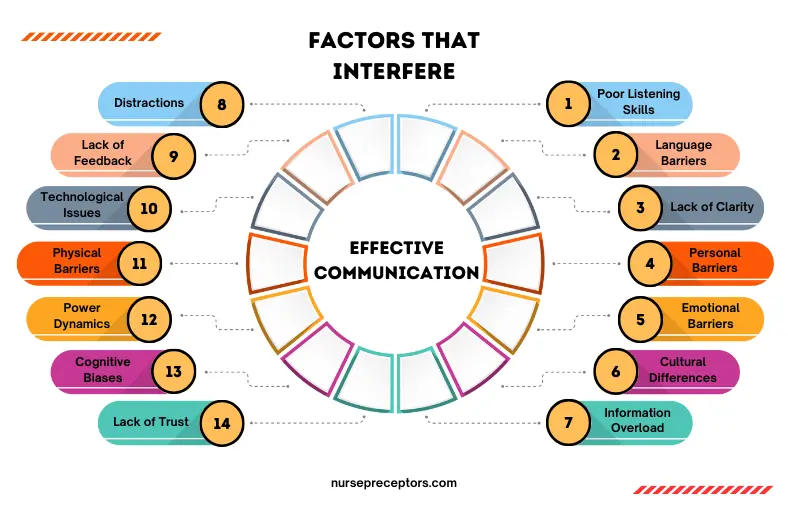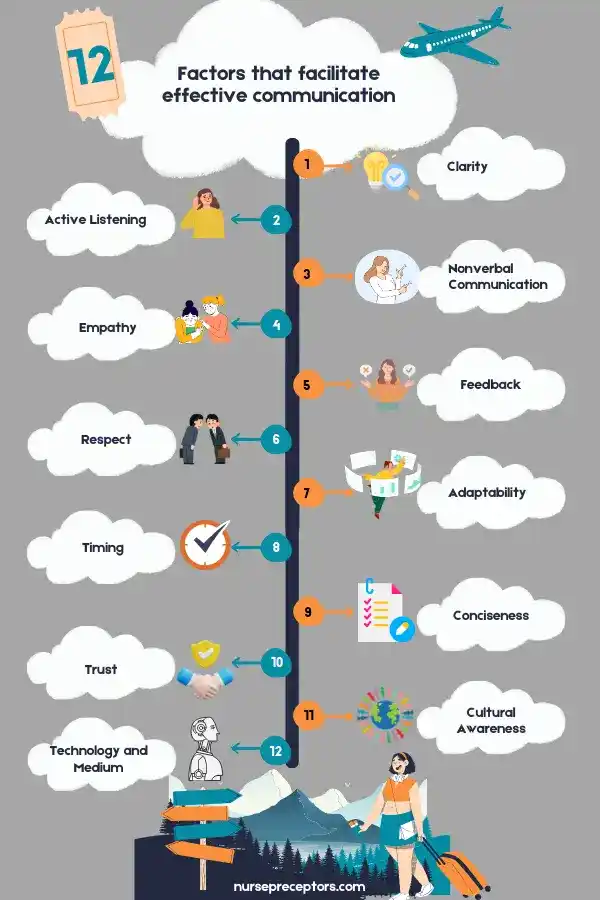Factors That Facilitate Effective Communication
Effective communication is instrumental in building strong relationships, whether personal or professional.
It helps to prevent misunderstandings, improve productivity, and foster a positive work environment. Nurse Preceptors gives full information about Effective Communication in the USA.
Several factors come into play in facilitating effective communication. These factors include:
By considering and incorporating these factors into communication practices, individuals and organizations can improve the quality of interactions, strengthen relationships, and achieve better outcomes.
It can foster more meaningful and productive interactions, leading to improved relationships, better decision-making, and enhanced overall effectiveness.
Factors That Interfere Effective Communication
Effective communication can be hindered by various factors that create barriers to understanding, engagement, and clarity. These barriers can arise from different sources, let’s elaborate on each of the factors that can interfere with effective communication:

By recognizing and addressing these factors that interfere with effective communication, individuals, and organizations can work towards overcoming barriers and fostering more successful and meaningful interactions.
This may involve improving listening skills, enhancing clarity in communication, promoting cultural awareness, providing feedback mechanisms, and creating supportive communication environments.
References:
- Berman, A., Snyder, S., & Frandsen, G. (2016). Kozier & Erb’s Fundamentals of Nursing: Concepts, Practice, and Process (10th ed.). Pearson.
- Delaune, S. C., & Ladner, P. K. (2002). Fundamentals of nursing : standards & practice. Delmar Thomson Learning.
- Weiss, S. A., & Tappen, R. M. (2015). Essentials of nursing leadership and management (6th ed.). F.A. Davis Company.
- Patricia Ann Potter, Anne Griffin Perry, Stockert, P. A., & Hall, A. (2019). Essentials for nursing practice. Elsevier.
- Leadership, P. (2021, August 21). Key factors that contribute to Effective Communication. Pragati Leadership. https://pragatileadership.com/key-factors-that-contribute-to-effective-communication/
- EMS Operations – Therapeutic Communication – Factors for Effective Communication. (n.d.). Medictests.com. https://medictests.com/units/factors-for-effective-communication
- Robinson, L., Segal, J., & Smith, M. (2024, February 5). Effective Communication. Help Guide. https://www.helpguide.org/articles/relationships-communication/effective-communication.htm

You’re welcome! Thank you for your understanding. If you have any specific questions, topics, or areas of interest you’d like to explore, feel free to share them. Whether it’s about technology trends, scientific discoveries, literary analysis, or any other subject, I’m here to provide information and assistance. Just let me know how I can assist you further, and I’ll be happy to help!
In return, I would like to extend my support by visiting your website as well. I believe in fostering a sense of community and reciprocity, and I’m eager to see what you have to offer on your platform.